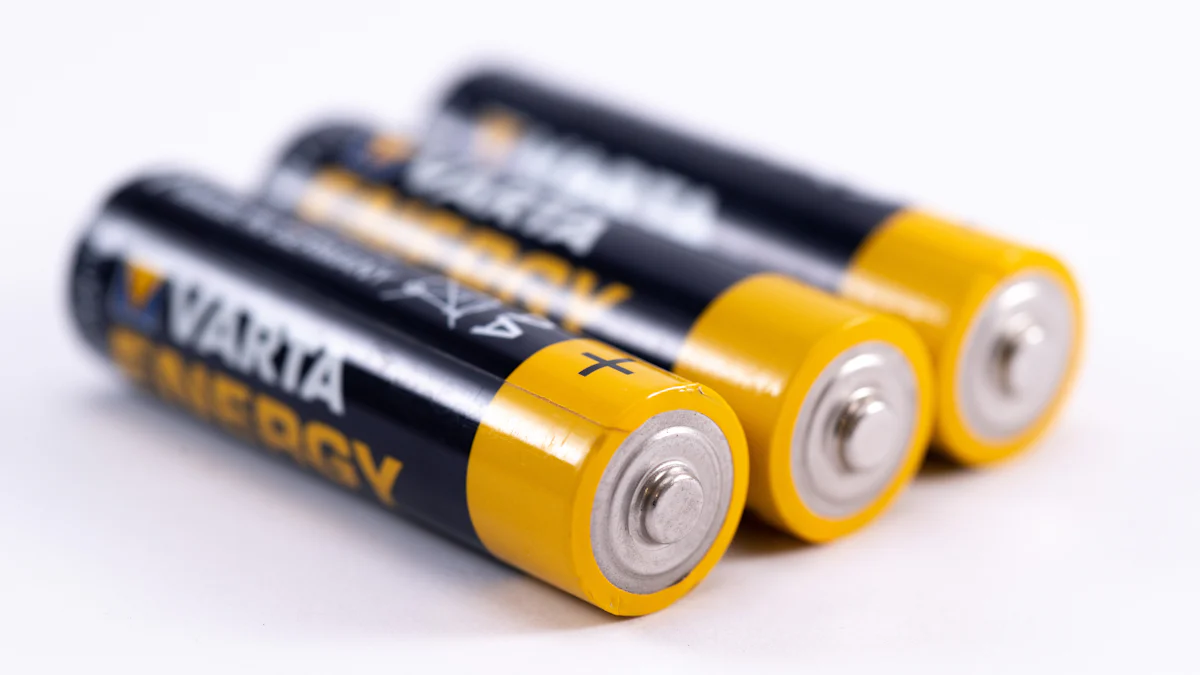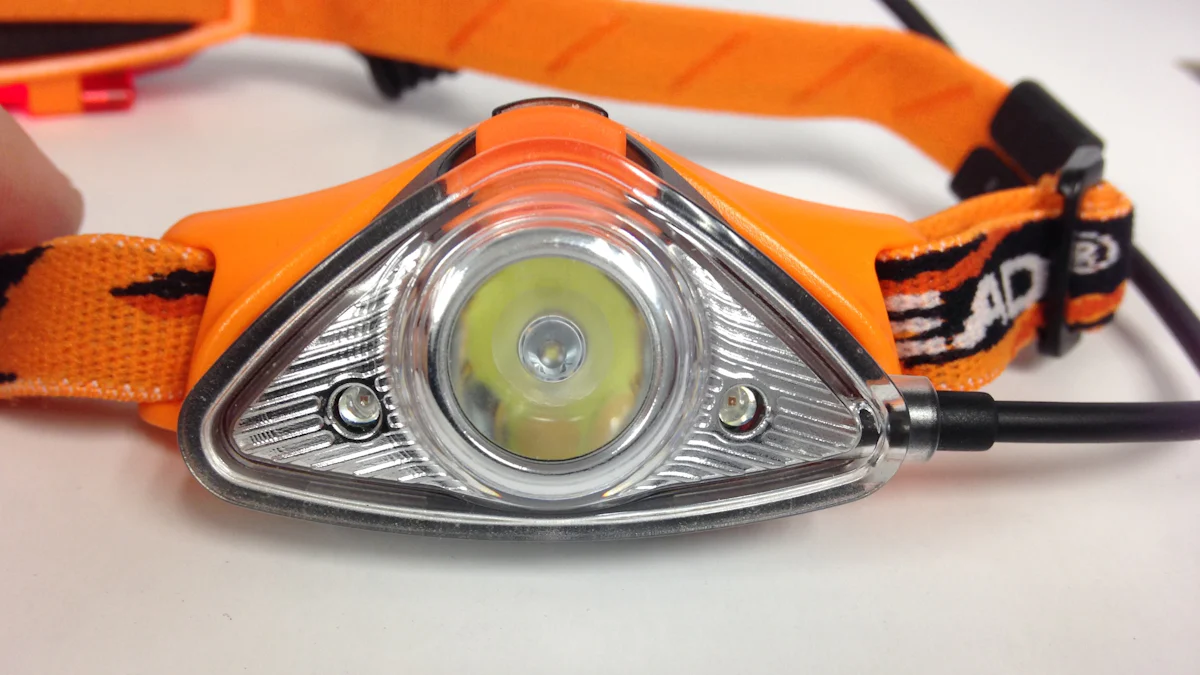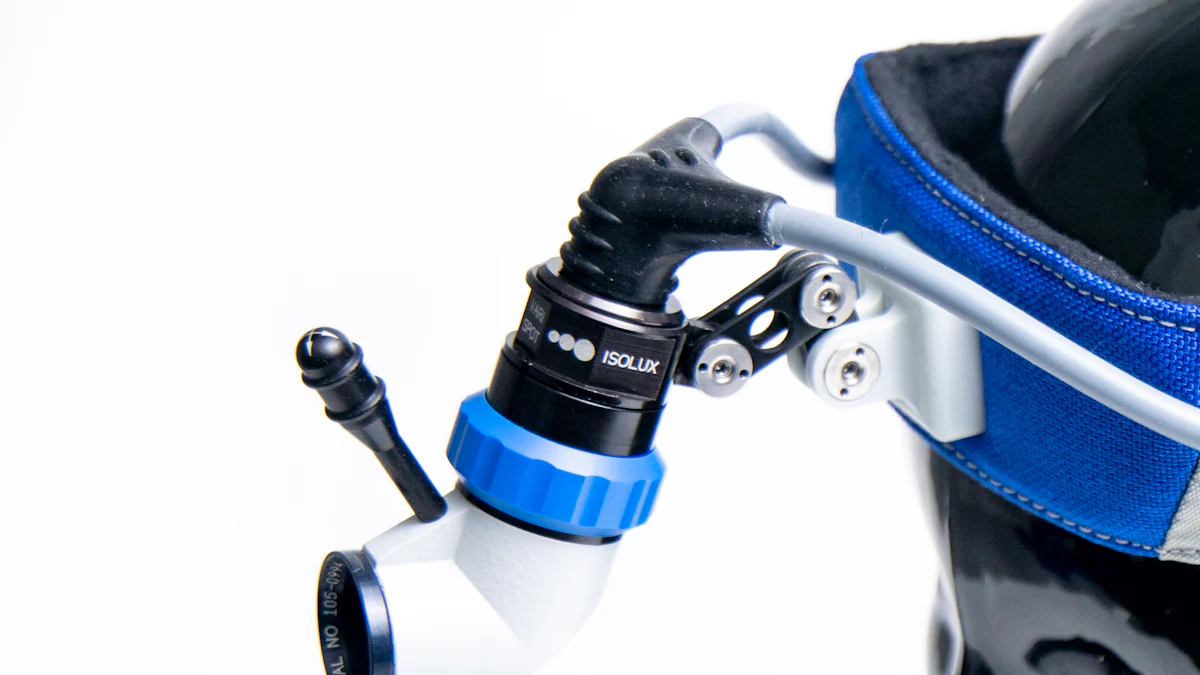Rechargeable Headlamps or Batteries Which Is Best

Reliable lighting plays a critical role in emergencies, where darkness can increase risks. Statistics show that nearly 500,000 buildings in the U.S. experience fires annually, causing $8 billion in losses and about 3,000 deaths. Darkness also makes people ten times more likely to feel disoriented, raising the chances of injury.
When choosing between rechargeable headlamps and battery-powered options, you must consider functionality. Rechargeable headlamps offer USB charging, consistent brightness, and reduced environmental waste. Battery-powered headlamps, however, excel in long-term storage and quick replacements. The best choice depends on your needs and the type of disaster you prepare for.
Key Takeaways
Rechargeable headlamps are handy with USB charging. They are great for outdoor use and emergencies.
Using rechargeable headlamps helps the environment. They can be reused many times, unlike throwaway batteries.
Rechargeable headlamps save money over time. But battery-powered ones are better for storage and quick use in emergencies.
Think about what you need and the emergencies you might face when picking between rechargeable or battery-powered headlamps.
Having both types of headlamps keeps you ready for anything. This gives you options and peace of mind.
Advantages of Rechargeable Headlamps

Convenience and Ease of Use
Rechargeable headlamps simplify your emergency preparedness and outdoor adventures. These headlamps are compatible with USB charging devices like power banks or solar chargers, making them easy to recharge wherever you are. You no longer need to carry or replace disposable batteries, which reduces the hassle of managing extra supplies.
For outdoor activities such as hiking or climbing, a rechargeable headlamp offers unmatched convenience. It eliminates the need for bulky battery packs, saving space in your gear. A compact USB cable is all you need to keep your lighting ready. Many models also include a battery indicator, so you always know how much power remains. This feature ensures you won’t be caught off guard in the dark. Additionally, rechargeable headlamps are often lighter than battery-powered ones, making them more comfortable for extended use.
Environmental Benefits
Switching to rechargeable headlamps significantly reduces environmental waste. Disposable batteries contribute to over 1.5 billion discarded units annually in the U.S., according to the Environmental Protection Agency. By choosing a rechargeable headlamp, you help prevent this waste. Rechargeable batteries can be reused hundreds of times, cutting down on landfill contributions.
Rechargeable options also minimize pollution risks. Unlike single-use batteries, which contain hazardous materials like mercury and cadmium, rechargeable batteries are less toxic. This reduces the chances of soil and water contamination. Recharging batteries also consumes less energy than manufacturing new ones, lowering carbon emissions and supporting sustainable practices.
Cost-Effectiveness Over Time
Although rechargeable headlamps may have a higher initial cost, they save you money in the long run. Rechargeable batteries can last for hundreds of cycles, eliminating the need for constant replacements. For example, a rechargeable lithium-ion battery can last up to 500 cycles, which could equate to nearly a decade of use.
Over a five-year period, the cost of a rechargeable headlamp, such as the Coast FL75R, is lower than a battery-powered model like the Coast FL85. While the FL85 has a lower upfront price, ongoing battery purchases quickly exceed the initial savings. If you frequently use your headlamp, a rechargeable model becomes a smart investment.
Disadvantages of Rechargeable Headlamps
Dependence on Power Sources
Rechargeable headlamps rely on electricity or USB charging devices to function. In emergencies, especially during natural disasters, access to power can become a challenge. You might find yourself in situations where charging options are unavailable. For example, prolonged power outages caused by hurricanes or earthquakes can leave you without a way to recharge your headlamp.
Even if you have a power bank or solar charger, these devices also have limits. A power bank eventually runs out of charge, and solar chargers depend on sunlight. If you face cloudy weather or nighttime conditions, recharging becomes impossible. This dependence on external power sources makes rechargeable headlamps less reliable in extended emergencies.
Limited Runtime in Extended Emergencies
Rechargeable batteries often lack the long-lasting battery life that disposable batteries provide. While they perform well for short-term use, their runtime may not meet your needs during extended emergencies. For instance, if you’re camping in a remote area or dealing with disasters that last several days, a rechargeable headlamp might not provide consistent illumination.
Once the battery depletes, you must recharge it before using the headlamp again. This creates a risk of being left without light when you need it most. In contrast, battery-powered headlamps allow you to quickly replace the batteries and continue using them. If recharging isn’t possible, you could find yourself in complete darkness, which can be dangerous in unfamiliar or hazardous environments.
Tip: To mitigate these disadvantages, consider carrying a backup power source or combining rechargeable and battery-powered headlamps for maximum preparedness.
Advantages of Battery-Powered Headlamps

Readily Available Power Source
Battery-powered headlamps offer unmatched reliability during emergencies. Disposable batteries are widely available in most regions, making them easy to stockpile for disaster preparedness. Whether you live in North America or the Asia-Pacific region, disposable batteries dominate the market.
Region | Market Share (%) | Valuation (USD) | Growth Rate (CAGR) |
|---|---|---|---|
Asia-Pacific | 35.67 | 4.48 billion | N/A |
North America | N/A | N/A | 7.31% |
This availability ensures you can always find replacements, even in remote areas. Battery-powered headlamps also adapt well to emergency kits. Their hands-free design proves invaluable in situations like nighttime vehicle breakdowns or power outages. Recent advancements in technology have improved their brightness and battery life, making them a dependable choice for unpredictable scenarios.
Longer Storage Life for Emergencies
Disposable batteries excel in long-term storage, making them ideal for disaster scenarios. Many common battery types, such as lead acid, have a shelf life of up to 10 years. This longevity ensures your headlamp remains functional when you need it most.
Battery Type | Shelf Life (Years) | Notes |
|---|---|---|
Carbon Zinc | 1-3 | Shorter lifespan, prone to leakage in humid conditions. |
Nickel Cadmium (NiCd) | 1-3 | Memory effect reduces capacity; moderate self-discharge. |
Lead Acid | 5-10 | Requires periodic charging; best stored at cooler temperatures. |
Unlike rechargeable options, disposable batteries don’t lose charge over time when stored properly. This makes them a practical solution for long-term emergencies where power sources may be unavailable.
Easy Replacement in the Field
Battery-powered headlamps shine when it comes to quick and easy replacements. Swapping out disposable batteries takes only seconds, ensuring you experience no downtime. This feature becomes critical in high-stakes situations where every moment counts.
For example, if your headlamp runs out of power during a nighttime hike, you can simply replace the batteries and continue your journey. You don’t need to wait for recharging, which can be a lifesaver in emergencies. Many affordable headlamps now support both disposable and USB-rechargeable batteries, giving you even more flexibility in the field.
Tip: Keep a small pack of spare batteries in your emergency kit or backpack. This ensures you’re always prepared for unexpected situations.
Disadvantages of Battery-Powered Headlamps
Higher Long-Term Cost
Battery-powered headlamps may seem affordable at first, but their long-term cost can add up quickly. Frequent battery replacements become expensive, especially if you use your headlamp regularly. For example, alkaline batteries often last only a few hours in high-powered headlamps. If you rely on your headlamp for outdoor activities or emergencies, you might find yourself buying new batteries every few weeks.
This ongoing expense makes battery-powered headlamps less economical for frequent use. Over time, the cost of disposable batteries can exceed the price of a rechargeable headlamp. If you’re on a budget, this can strain your finances. While stockpiling batteries for emergencies is practical, it’s not always the most cost-effective solution for everyday use.
Tip: To save money, consider using rechargeable batteries in compatible headlamps. This hybrid approach reduces replacement costs while maintaining flexibility.
Environmental Impact of Disposable Batteries
Disposable batteries pose significant environmental challenges. When improperly discarded, they contribute to various forms of pollution:
Soil Contamination: Toxic chemicals like mercury and cadmium can leak into the soil, reducing fertility and harming crops.
Water Pollution: Landfill leachate can carry battery pollutants into groundwater, affecting drinking water and aquatic ecosystems.
Air Pollution: Incinerating batteries releases harmful fumes, degrading air quality and impacting human health.
Ecosystem Disruption: Toxic elements can accumulate in the food chain, threatening wildlife and sensitive species.
Human Health Risks: Exposure to battery chemicals can cause neurological and respiratory issues.
Proper disposal is essential to minimize these risks. Recycling centers and take-back programs safely handle hazardous materials, preventing them from entering the environment. Public awareness campaigns also play a crucial role in educating people about the dangers of improper disposal.
Switching to rechargeable batteries is another effective way to reduce waste. Rechargeable options last longer and decrease the demand for disposable batteries, making them a more sustainable choice. By adopting these practices, you can help protect the environment while staying prepared for emergencies.
Key Considerations for Emergency Preparedness
Type of Disaster and Expected Duration
Your choice of headlamp depends on the type of emergency and how long it might last. Short-term emergencies, like power outages or brief outdoor activities, often favor rechargeable options. A rechargeable flashlight provides reliable illumination and consistent brightness, ensuring safety and efficiency during these situations. For long-term emergencies, such as extended natural disasters, battery-powered headlamps may prove more dependable. Their longer shelf life and ease of replacement make them ideal for prolonged use.
The likelihood of accessing power or supplies also plays a critical role. If you expect access to usb rechargeable lights like solar chargers or power banks, a rechargeable headlamp becomes a practical choice. However, in remote areas or disaster scenarios where power sources are scarce, disposable batteries offer unmatched reliability.
Factor | Rechargeable Batteries | Disposable Batteries |
|---|---|---|
Brightness | Constant and reactive lighting performance | Standard lighting performance, brightness decreases over time |
Burn Time | Shorter burn time but consistent until depletion | Longer burn time, brightness gradually decreases |
Availability | Harder to find replacements | Easily available almost anywhere |
Ease of Use | Requires a power source and time to recharge | Can be swapped out anywhere |
Maximum Performance | Can be recharged before use for max power | Needs frequent replacement to maintain max power |
Waste | Reusable, limits waste | Creates waste after disposal |
Self-discharge | Loses charge over time when not in use | Reliable after long periods of non-use |
Cold Weather | Better performance in cold weather | Loses charge significantly in cold weather |
Size | Varies, often bulkier | Generally more compact |
Access to Power and Replacement Batteries
During emergencies, the availability of power sources determines your lighting solution. Common power sources include battery-powered, solar-powered, and crank-powered options. Battery-powered lights are portable and reliable, making them suitable for individual use. Solar-powered lights charge during the day and provide light at night, eliminating the need for batteries. Crank-powered lights require manual effort but remain essential when no other power is available.
If you have usb rechargeable lights like solar chargers or power banks, you can easily recharge your headlamp. This ensures you maintain visibility and reliable performance even during extended emergencies. However, if replacement batteries are easier to obtain in your area, a battery-powered headlamp might better suit your preparedness plan.
Budget and Personal Preferences
Your budget and personal preferences also influence your decision. Rechargeable headlamps often cost more upfront but save money over time. Charging a rechargeable flashlight costs less than $1 annually, while replacing batteries for a standard headlamp can exceed $100 each year. This stark difference highlights the long-term savings of rechargeable options.
If you prioritize convenience and sustainability, usb rechargeable lights offer a sustainable lighting option with minimal waste. On the other hand, if reliability and portability are your main concerns, disposable batteries provide a versatile and dependable choice. Consider your lighting needs and how often you’ll use your headlamp to make the best decision for your safety and preparedness.
Choosing between rechargeable and battery-powered headlamps depends on your specific needs and the emergencies you anticipate. Rechargeable headlamps save money over time, reduce environmental waste, and offer consistent brightness. They also feature battery indicators and perform well in cold weather. On the other hand, battery-powered headlamps excel in long-term storage, quick replacements, and reliability when power sources are unavailable.
Owning both types ensures you stay prepared for any situation. Rechargeable headlamps provide cost-efficiency and sustainability, while battery-powered options offer unmatched dependability. Combining these tools gives you flexibility, convenience, and peace of mind in emergencies.
FAQ
What is the main difference between rechargeable and battery-powered headlamps?
Rechargeable headlamps use built-in batteries that you can recharge via USB, while battery-powered headlamps rely on disposable or replaceable batteries. Rechargeable models save money over time and reduce waste. Battery-powered options offer longer storage life and quick replacements, making them ideal for emergencies.
Can I use rechargeable batteries in a battery-powered headlamp?
Yes, many battery-powered headlamps support rechargeable batteries. Check the manufacturer’s specifications to ensure compatibility. Using rechargeable batteries reduces waste and saves money. However, keep a few disposable batteries as backups for emergencies when recharging isn’t possible.
How long do rechargeable headlamps typically last on a single charge?
Most rechargeable headlamps provide 4-12 hours of light, depending on the brightness setting. Lower settings extend runtime, while higher settings drain the battery faster. Always check the product specifications for exact details and carry a power bank for extended use.
Are rechargeable headlamps suitable for cold weather?
Rechargeable headlamps perform better in cold weather compared to disposable batteries, which lose charge quickly in low temperatures. Lithium-ion batteries, commonly used in rechargeable models, maintain their efficiency in colder conditions, making them a reliable choice for winter activities.
Should I own both rechargeable and battery-powered headlamps?
Yes, owning both types ensures maximum preparedness. Rechargeable headlamps are cost-effective and eco-friendly for daily use. Battery-powered headlamps provide reliable backup during extended emergencies or when power sources are unavailable. Combining both offers flexibility and peace of mind.
See Also
Selecting The Perfect Rechargeable Flashlight For Hiking Adventures
Tips For Picking The Ideal Headlamp Flashlight
Essential Factors To Evaluate When Buying A Headlamp
